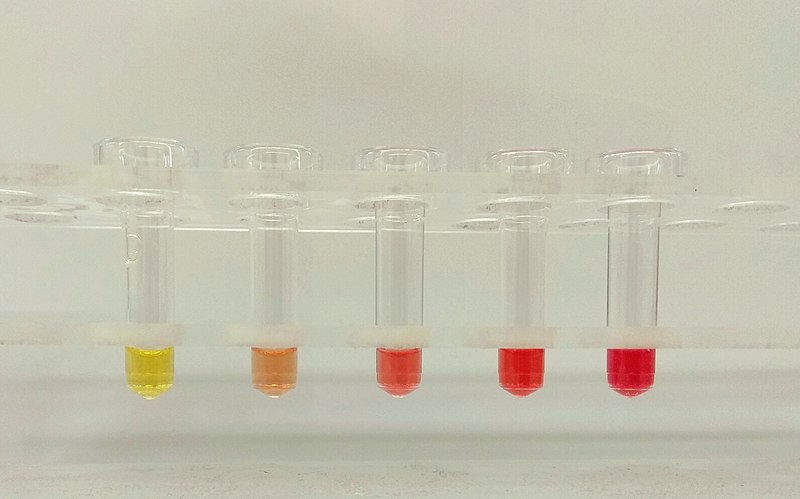What is the Difference Between Hemolysis and Crenation
Table of Contents
The key difference between hemolysis and crenation is that hemolysis is a phenomenon that occurs when red blood cells are in a hypotonic solution, causing red blood cells to swell up and burst due to the flow of more water content into the cells, while crenation is a phenomenon that occurs when red blood cells are in a hypertonic solution, causing red blood cells to shrivel due to the flow of more water out of the cells.
Hemolysis and crenation are two phenomena that occur in red blood cells due to osmosis. Osmosis is the spontaneous net movement of solvent or water molecules through a selectively permeable membrane from a region of high water potential to a region of low water potential. This process equalizes the solute concentrations between the two sides.
CONTENTS
1. Overview and Key Difference
2. What is Hemolysis
3. What is Crenation
4. Similarities – Hemolysis and Crenation
5. Hemolysis vs Crenation in Tabular Form
6. Summary – Hemolysis vs Crenation
What is Hemolysis?
Hemolysis is a phenomenon that occurs when red blood cells are in a hypotonic solution. It causes red blood cells to swell up and burst as more water moves inside the cells. In the human body, hemolysis is a natural bodily process that occurs in red blood cells when they become too old. The body typically performs hemolysis in the spleen. As blood is filtered through this organ, old and damaged red blood cells are destructed by white blood cells and macrophages.

Figure 01: Hemolysis
However, some intrinsic and extrinsic factors can cause hemolysis unnaturally. These intrinsic factors include hereditary, cell membrane conditions, acquired cell membrane conditions, conditions affecting RBC metabolism, hemoglobinopathies, and abnormalities in the RBC membrane. On the other hand, the extrinsic factors include chemicals, infections, medicines such as penicillin, acetaminophen, any condition that cause increased spleen activity, immune reactions, intense physical activities, mechanical damage from artificial heart valves, toxins such as lead and copper, and poisons including venoms. Furthermore, excessive hemolysis can cause hemolytic anemia, which is a critical situation. This situation can be corrected through blood transfusion or any other relevant remedies.
What is Crenation?
Crenation is a phenomenon that occurs when red blood cells are in a hypertonic solution. It causes red blood cells to shrivel due to water moving out of the cells. Red blood cells are prone to undergoing crenation due to response to ionic changes in the blood or abnormalities in the cell membrane. These changes can affect the cell’s ability to maintain an isotonic state.

Figure 02: Crenation
Normally, there are two types of crenated red blood cells: echinocytes and acanthocytes. Both these cell types have unusual shapes. They appear in a rounder form and have spiny projections on the cell surface. In echinocytes, the spines are short, uniform, and regularly spaced. This type of crenation is usually reversible. Acanthocytes have spines on the cell membrane that manifest in uneven and abnormal distributions, numbers, and lengths. Furthermore, this type of crenation is irreversible.
What are the Similarities Between Hemolysis and Crenation?
- Hemolysis and crenation are two phenomena that occur in red blood cells due to osmosis.
- In both processes, there is a movement of solvents across a semi-permeable membrane.
- The red blood cells’ natural structure (shape and size) changes in both processes.
- Both processes can take place inside the human body naturally or due to various medical conditions.
What is the Difference Between Hemolysis and Crenation?
Hemolysis is a phenomenon occurring when red blood cells are in a hypotonic solution, which causes red blood cells to swell up and burst, while crenation is a phenomenon occurring when red blood cells are in a hypertonic solution, which causes red blood to shrivel. Thus, this is the key difference between hemolysis and crenation. Furthermore, in hemolysis, red blood cell size increases, whereas, in crenation, red blood cell size decreases.
The below infographic presents the differences between hemolysis and crenation in tabular form for side-by-side comparison.
Summary – Hemolysis vs Crenation
Hemolysis and crenation are two phenomena that occur in red blood cells due to osmosis. Hemolysis occurs when red blood cells are in a hypotonic solution, causing red blood cells to swell up and burst due to water into the cells. Crenation occurs when red blood cells are in a hypertonic solution, causing red blood cells to shrivel due to water moving out of the cells. So, this summarizes the difference between hemolysis and crenation.
Reference:
1. “Hemolysis.” Encyclopædia Britannica, Encyclopædia Britannica, Inc.
2. Mary, McMahon. “What Is Crenation?” Wise Geek. 26 May 2022.
Image Courtesy:
1. “HEMOLYSIS” By Vioximiko – Own work (CC BY-SA 4.0) via Commons Wikimedia
2. “Erythrocyte, center, undergone, process, crenation” By Janice Haney Carr, USCDCP (CC0) via Pixino
ncG1vNJzZmivp6x7pbXFn5yrnZ6YsqOx07CcnqZemLyue9ahmK1lmah6tbTEZpuinpaav6a6wp5km52krLKmuoyhnKannK7Aqr%2BMmqWdZZOnsq%2Bt06Kmp2c%3D